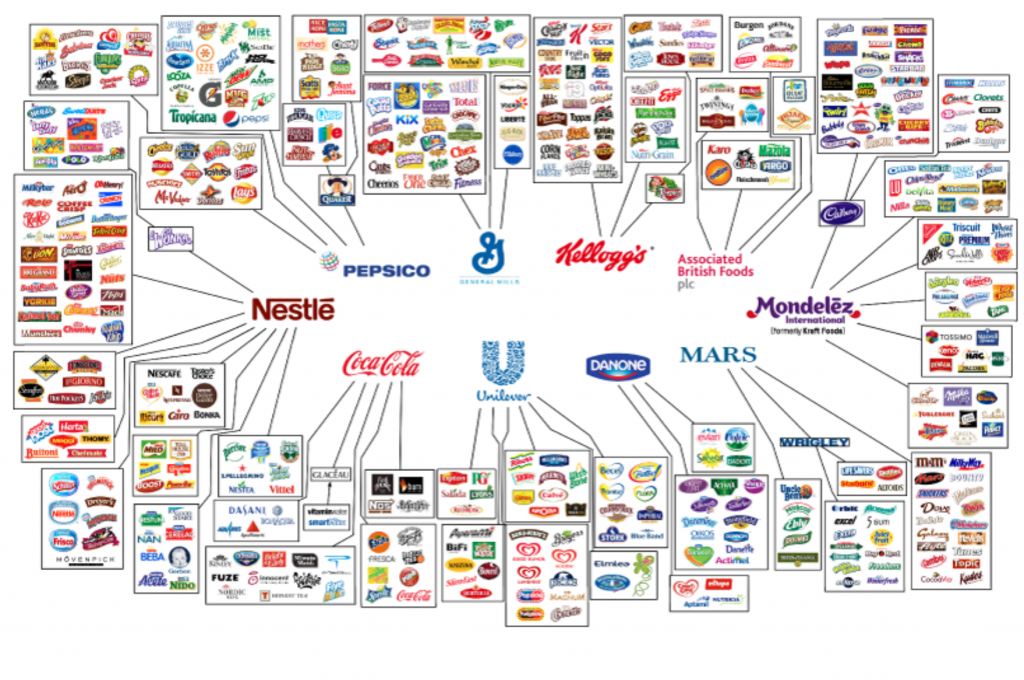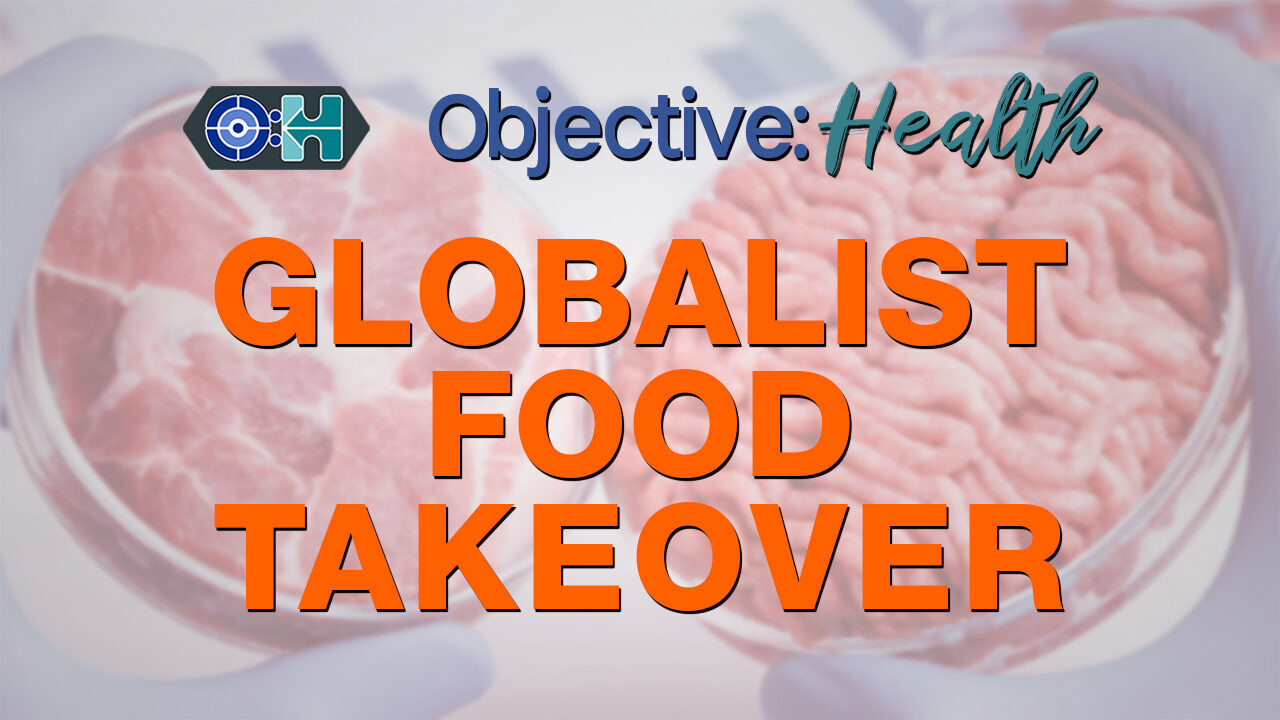This is the future of food by Corey Digs website, it's not fantasy, it's not conspiracy, it is happening right now all over the so called Western World.
The globalists are demolishing farmers and already have the new food system in place to control the food supply. Gene editing and digital IDs.

www.coreysdigs.com
NEW Controlled Food System Is Now In Place And They Will Stop At Nothing To Accelerate Their Control
Some snips
How Did They Lock This in Under The Radar? Some Critical Points:
The food industry is already monopolized by 10 companies, all of the seeds, produce, and meat too? What happens when produce and meat are all grown inside secured facilitie majority of which include Vanguard and BlackRock as top shareholders. What happens when they contes after a gene splice or inside a petri dish, and farmland becomes dormant due to overreaching regulations, lack of supplies, and manufactured inflation?
There are already over 100 companies in the Sacramento area working on seed development, so it should come as no surprise that the University of California is developing a plant-based mRNA vaccine in the hopes that farms can grow edible vaccine lettuce. Sounds deliciously perfect. As with so many exciting projects such as this, the National Science Foundation granted $500,000 for this gem.
“Imagine walking into your local grocery store on a frigid January day to pick up freshly harvested lettuce, fragrant basil, juicy sweet strawberries, and ripe red tomatoes – all of which were harvested at a local farm only hours before you’d arrived.” That quote from the
USDA’s article on Vertical Farming for the Future, published in October 2021, sounds so deliciously enticing and convenient, especially in anticipation of meeting the needs of 9 billion people by 2050, doesn’t it?
But, yes there’s always a “but,” what’s going to happen to the farmers when these astronomically enormous indoor vertical farm facilities have taken over every major city, locked in contracts with all major grocery store chains, and are funded by some of the same billionaire globalists who are seeking to control human beings through every industry for their fourth industrial revolution? It’s a legitimate concern. Add “gene-editing,” “smart,” “traceable,” and “net zero” to the production of these facilities, and the fact that they are still moving full speed ahead on digital IDs and currency, and it becomes even more concerning.
Sure, the idea of indoor vertical farming could be a great avenue for those with little land, those who live in harsher climates, and everyone who wants food security while these agendas against humanity continue to roll out, but wouldn’t it make more sense for communities to be doing this to meet their own needs, rather than relying on a digital ID to get access to a controlled food industry? The nutritional value from LED versus the sun likely removes some of the nutrients in the produce, but if faced with having difficulty accessing food, or not desiring gene-edited food, it might be a good idea.
There are already over 100 companies in the Sacramento area working on seed development, so it should come as no surprise that the University of California is developing a plant-based mRNA vaccine in the hopes that farms can grow edible vaccine lettuce. Sounds deliciously perfect. As with so many exciting projects such as this, the National Science Foundation granted $500,000 for this gem.
“Imagine walking into your local grocery store on a frigid January day to pick up freshly harvested lettuce, fragrant basil, juicy sweet strawberries, and ripe red tomatoes – all of which were harvested at a local farm only hours before you’d arrived.” That quote from the
USDA’s article on Vertical Farming for the Future, published in October 2021, sounds so deliciously enticing and convenient, especially in anticipation of meeting the needs of 9 billion people by 2050, doesn’t it?
But, yes there’s always a “but,” what’s going to happen to the farmers when these astronomically enormous indoor vertical farm facilities have taken over every major city, locked in contracts with all major grocery store chains, and are funded by some of the same billionaire globalists who are seeking to control human beings through every industry for their fourth industrial revolution? It’s a legitimate concern. Add “gene-editing,” “smart,” “traceable,” and “net zero” to the production of these facilities, and the fact that they are still moving full speed ahead on digital IDs and currency, and it becomes even more concerning.
Sure, the idea of indoor vertical farming could be a great avenue for those with little land, those who live in harsher climates, and everyone who wants food security while these agendas against humanity continue to roll out, but wouldn’t it make more sense for communities to be doing this to meet their own needs, rather than relying on a digital ID to get access to a controlled food industry? The nutritional value from LED versus the sun likely removes some of the nutrients in the produce, but if faced with having difficulty accessing food, or not desiring gene-edited food, it might be a good idea.
Several embedded videos to make a point.
From my own observation living in Canada, I recently noticed and purchased, what are called tomatoes on the vine and bell peppers. noticeable, just red yellow, and orange the green color is is sold separately they are all uniform in shape and size, with no blemishes, or differences, indicating change or sun pattern exposure.. They are relatively inexpensive $4 for four pounds regarding the price escalation at this timer. a dollar for a pound of peppers or tomatoes. I also noticed today, that they are offering beefsteak tomatoes,, same thing uniform size and also look, with a strange dispersion, just like the real thing,, only it looks bizarre when looking at them all lined together on a grocery store display. The future of food for those that can afford it, at this time it's a dollar a pound, how much will this price inflate, to gather all the cost of R & D in the cost, when the true impact of food prices hit the market. This is just a teaser, for the future.
I don't have much more to say than Henry Kissinger regarding food.
"Who Controls the Food Supply Controls People
I cant' eat them after reading this article, nor can I offer them to the people in my appartment building in good conscience, I have no understanding of there origin, just caught in the madness of cheap food, which I thought I could dehydrate, I just can't buy in this shit show.





